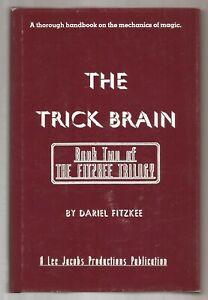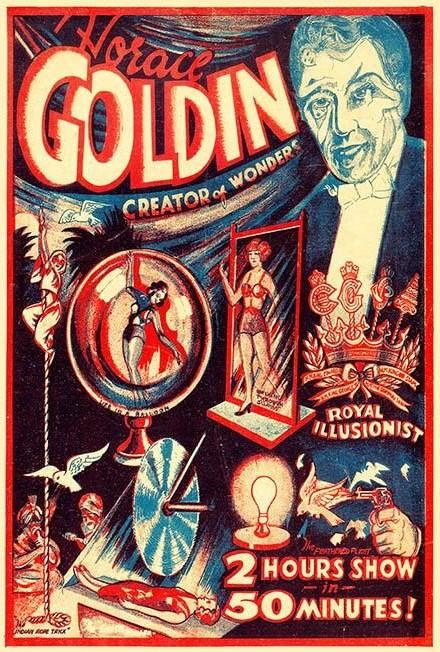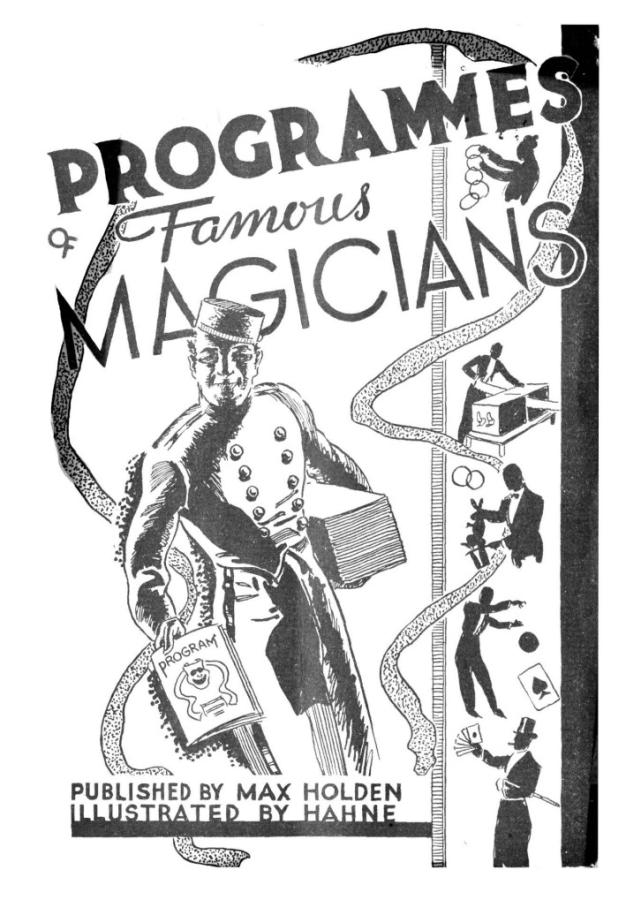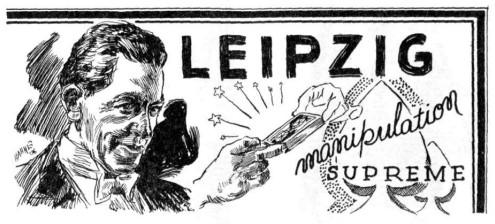Programmes Of Magicians
We’ve got tens of thousands of magic books published over the past century, each containing dozens of original routines… so why do all magicians seem to do the same six tricks?
I feel as guilty of this as anyone, and never does my pool of magical repertoire seem so shallow as when I’m trying to coordinate with other magicians on the same show.
“Oh, you’re doing a rope trick? Okay, I won’t do ropes. You’re doing a thing with envelopes, okay… scratch that then.”
It’s not just a one-for-one trade either. One routine can knock out a wide swath of other possibilities. If I’m doing the Benson Bowl routine, in which sponge balls are appearing under a bowl, then it removes the Cups & Balls, Chop Cup, and any other sponge ball routine from consideration.
If I do my Professor’s Nightmare routine, it doesn’t matter what you do with a piece of rope. It looks and feels too similar from the audience perspective.
Magicians get upset when they ask someone to “pick a card” and they say “oh, I’ve seen this one,” as if there’s only one pick-a-card trick in the world. But in show business the audience perception is audience reality. I’d argue that a general magic show should only have one pick-a-card trick, and if you do it again you need to make it feel very different.
As with any performance, it’s about creating the best experience for the audience and the best experience doesn’t include a feeling of “oh, I’ve seen this before.”
Your goal is to create a full programme of new, exciting, interesting, magical surprises and delights.
Not so easy!
Side note: It’s a major disappointment when I attend a magic club or convention show with repetitive tricks. This should be the responsibility of the show producer when arranging the programme, but failing that the acts themselves need to have a discussion. Being subjected to multiple Linking Ring routines in the same show is protected by the Universal Declaration of Human Rights. (somewhere near the end, I’m pretty sure.)
Checking All The Boxes
Assembling a diverse program is a challenge, even for a solo act, when you’re looking to fill an evening with an hour or more worth of magic.
One classic bit of wisdom is to consult a list with all the basic types of magic effects. Depending who you ask, and which book they’re reading, this list might have eight, ten, or more classifications. Here’s the list from Dariel Fitzkee’s “The Trick Brain”

- Production (Appearance, creation, multiplication)
- Vanish (Disappearance, obliteration)
- Transposition (Change in location)
- Transformation (Change in appearance. character or identity)
- Penetration (One solid through another)
- Restoration (Making the destroyed whole)
- Animation (Movement imparted to the inanimate)
- Anti-Gravity (Levitation and change in weight)
- Attraction (Mysterious adhesion)
- Sympathetic Reaction (Sympathetic response)
- Invulnerability (Injury proof)
- Physical Anomaly (Contradictions, abnormalities, freaks)
- Spectator Failure (Magicians' challenge)
- Control (Mind over the inanimate)
- Identification (Specific discovery)
- Thought Reading (Mental perception, mind reading)
- Thought Transmission (Thought projection and transference)
- Prediction (Foretelling the future)
- Extra-Sensory Perception (Unusual perception, other than mind)
The concept being to make sure your set list represents a variety of these effect types, and you’re not repeating your favourites too much.
This is even more delicate for a mentalist, as they are limited to only a few effects. I’ve seen performances struggling to create a full course with only one ingredient. “Pick any one of these six cards and it matches my prediction. Now pick any one of these five teddy bears and it matches my prediction. Now pick…”
This list alone, however, does not ensure variety. You could spend an hour doing every single one of those effects using only coins, but your audience would be grinding their teeth by the end of it, antsy for some different objects in play.
Ultimately it comes down to creating unique theatrical moments, which means the danger of repetitive action goes deeper than the level of repertoire. If I throw a frisbee into the audience to have some random numbers said aloud, it becomes less exciting to later throw a balloon around the crowd to have a card named. Even if the tricks are entirely different, we’ve seen that idea already.
The most common cause of magic show monotony is not the props, or the tricks, but the performer themselves. They stand in the center of the stage, holding something in their hand, and talking. Over and over again. There are no theatrical dynamics. No change in their voice, or emotions.
In the big picture, it really is a lot of work to make every moment of your show unique, fresh, and different. But as a small step all you need to do is make a new choice in that moment. Change where you stand. Change how you speak. Change the picture. Do anything… but different.
Peek At The Pro's Set List
I’m always curious about other magicians’ set lists. What are you actually performing? In what order? Admittedly this curiosity is largely driven by this feeling that I’m always making it up as I go along, and I assume everybody else has it figured out.
Fortunately, I can satisfy my curiosity in bulk thanks to the publication of a couple fascinating old books. These collections simply describe the acts of magicians, from the audience perspective. What they did, and the order in which they did it.
Even more fortunately, these books are so old that they are in the public domain, and I can share them with you in their entirety.
Programmes of Magicians
Published in 1906, written by J.F. Burrows, “showing at a glance the tricks performed by all the leading conjurors, extending over a period of forty-two years, from 1864 to 1906. - An Invaluable Guide for the Amateur and Professional. Just the Book that every Magician wants.”
A short description of a performance by Professor Fuller shows we haven’t changed much in the past 150 years.
The passe-passe bottle, cardboard cylinders and glass (bottle and glass change places). A watch passed from a stocking into the nest of boxes, The inexhaustible hat (balls, cannon ball, metal lanterns, etc.). The metal cone and production of a plant in a pot. The sword passed through the body. The inverted glass of water (defies the laws of gravity).
It’s got a good variety of effects and moments. That would still make for a nice 15 to 20 minute act today.
Here is an excerpt describing the grandiose act of Horace Goldin:

Performer rushes on stage, seizes handkerchief, and produces a fire bowl from under it. Next, takes a red silk handkerchief from his pocket, vanishes, and reproduces it from leg, then puts it on the barrel of a gun, fires, handkerchief vanishes, and is reproduced from performer's collar. Produces from a small drum a number of silk flags, which are transformed into two very large flags suspended across the stage. A small bath is covered with a cloth, and an egg thrown into bath through a hole in the centre of cloth, which is then removed, and several ducks produced from bath.
Next follows the Chinese rice bowls, and glass of water vanished from a handkerchief combination. A plant is then produced in a pot on a glass top table. The tablecloth pulled off a table without upsetting the articles on table, then four eggs are placed on rings on a tray on top of four glasses. The tray is knocked smartly away, the eggs falling into the glasses. The eggs used are produced from an assistant's mouth.
A small cube is shown, at a pistol shot it enlarges into eight times the original size (square measure), a lady then steps out from the cube. One chair is made into two, a lady sits on one, Goldin on the other. Wine poured from bottle into glasses, Goldin changes his wine into confetti, lady dances.
Two Salvationists (man and woman) now march across the stage, beating drum and tambourine. A pair of large scales are brought on, lady gets on scale and is covered with cloth, and weighed by Goldin. Salvationists return, Goldin hides behind a cloak, then comes out and fires pistol. Lady from scale vanishes, female Salvationist removes cloak showing that she is the lady that was on the scale. Male Salvationist removes his cloak showing that he is Goldin.
Kellar's flower trees produced from a cone on two side tables is the next trick. Second pot, after cone is placed over it, is brought onto a table in front of stage. After the trick the third table collapses, and closes up in the form of a hand-box, and is carried off by Goldin.
Aga, the floating lady illusion, follows. Goldin walks away, leaving the lady suspended in air. Lady next gets into a big cannon, which is fired at a box slung up to the roof of theatre. The box is then brought down on ropes to stage and opened, when a second box is taken out of the first, and a third box from the second one. Lady is discovered in the last box.
Lady tied in a sack, then suspended from a scaffold, pistol fired, empty sack drops to floor, showing that the lady has vanished. Large cage on a cross-shaped stand is now brought on, Goldin gets in cage, assistant in cloak and hood pulls curtains down, then goes off to side for pistol, comes back, fires pistol, curtains withdrawn showing a lady in cage instead of Goldin, assistant throws off cloak, and shows that he is Goldin.
Next a rabbit is produced from a paper cone. A number of ducks are placed in a bucket, covered by a sheet of paper. Ducks are then vanished. Another duck is vanished after being wrapped in newspaper. The ducks are reproduced from an ordinary-looking washtub filled with water.
It really does sound like a spectacular show, and at a grand scale far beyond what you see in touring shows today. However, I’m sure you noticed the repetition. Maybe there is some missing context, but it seems especially odd to end the show producing ducks from a tub of water, when it lists that exact same effect at the beginning.
No doubt inspired by the previous book, Max Holden set out to document the acts of modern magicians, at the time of publication in 1937.

Since we’re on the topic of variety it might be interesting to highlight the programme of Nate Leipzig as he famously performed with only a deck of cards.

Two or more spectators are requested to come upon the stage to act as a committee.
Leipzig Four Ace Trick — Ace of hearts is placed on the bottom of the pack and the Ace of Clubs on top. The Ace of Diamonds and the Ace of Spades are placed in the center. The pack is riffled and Leipzig runs through the pack to show that the Aces have vanished. Still, on slapping the pack with the right hand, each Ace makes its appearance on the face of the pack.
Three Cards are Peeked at by different spectators and the pack is dealt on the table one at a time after being shuffled by Leipzig. The spectator who peeked at the first card is asked to stop him anytime as Nate remarks "The card that you peeked at will be the exact card at which you stop me." The correct card is found. The second peeked at card is now found by the spectator when he deals the cards himself and stops at a free choice. The third card was found by spectator by inserting a knife into the pack. This card was not the selected card but when the spectator named his card, it was found to have changed to the correct card.
Stabbing Trick — Two cards are selected and returned to the pack which is then shuffled and wrapped in a piece of newspaper. A knife is thrust into the packet and the paper torn away. On each side of the knife are found the two selected cards.
Twenty Card Trick — A spectator is requested to count ten cards on Leipzig's outstretched right hand. Another ten cards are counted on the left hand. The cards in the left hand are wrapped in a handkerchief and handed to one spectator. The other ten cards are once more counted by Leipzig. One card is commanded to pass over to the packet held by the spectator. The cards are counted and only nine cards remain. Again a card passes over leaving eight cards in Leipzig's hands. Still another card passes over leaving only seven cards and when the spectator opens his packet he finds that he is holding thirteen cards.
I was intrigued at the inclusion of the stabbing trick when the previous routine also includes finding a card by stabbing a knife into the deck. Although, the first time the stabbed card is wrong. I plucked “The Leipzig Book” off the shelf, and it offers a more detailed description of the act.
It turns out the first stab, the one that misses, has the spectator holding the knife trying to find their own card. This makes for a great lead-in to Leipzig’s own stabbing effect under challenge conditions.
The book also reveals, at least in earlier years, Leipzig was opening this act with a thimble routine. So I don’t want to hear objections from the “I only do cards” people… get yourself some thimbles like a real pro!
The urge is strong to pick up a trick after seeing another person have success with it. These two ‘Programmes Of…’ books offer one of the few options for ethically stealing from another performer’s act. Rather than copying ‘being inspired by’ your peers, these programmes are all off the market and ready to be stripped for parts like a rusted car.
My cynical side is thinking most magic show programmes are more strongly influenced by the latest dealer catalogue than by careful consideration of a well-rounded audience experience.
On the other hand the checklist approach to variety clashes with one of my core beliefs, making the repertoire selection seem overly important. The trick doesn’t matter. There’s no formula for success. Paint-by-numbers does not an artist make. How you do it is more important than what you do.
As with everything in putting your show together, it’s more important that you consider the question, than find the answer. If you can think about how this next card trick is going to feel uniquely different than the previous twelve, you’re all set. You can leave the thimbles in the cookie tin.
Comments
Programs of Famous Magicians
Eugene Burger listed this as one of his FAVORITE books!
You must sign in to add a comment.